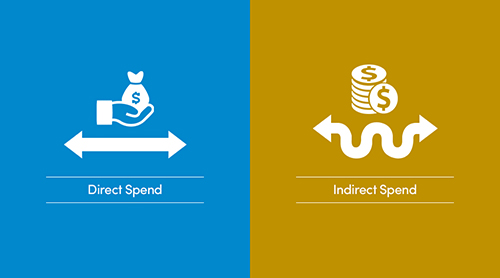Direct vs. Indirect Spend – Next Level Purchasing
Imagine you are throwing a party and negotiate a 20 percent discount on the food, but spend the money saved on extra four crates of beer. You can certainly argue that you got more for your money, but from a purely financial point of view you did not reduce the total cost of the party. This is a very real concern at a great deal of organizations and there are a number of different ways to address the problem and ensure that savings hit the bottom line.

Procurement is a complex business function, evident from organization to organization, and automatically tied to many aspects of a company’s corporate structure. As all business functions, procurement possesses segmentations that must work together, while remaining completely stand-alone: such as Indirect Procurement and Direct Procurement.
Direct procurement is a process to acquire resources that go into building the actual product or service the business is offering.
Indirect procurement is the process of acquiring resources that support the ongoing existence of the business.
Indirect spend has never quite enjoyed the same limelight as direct spend. Seen largely as the lowly cousin of the two, businesses ignored it for a long time. But as the search for efficiencies and savings continues, indirect spend is getting more attention than ever before. While this is a good thing, the right performance measurements need to be in place if buyers are to deliver as efficiently as possible.
The relative share of indirect spend might be limited, but the absolute value can be significant
Some experts view spend as spend, no matter if it comes from direct procurement or indirect procurement. There needs to exist a certain degree of balance between direct and indirect procurement.
Indirect Spend: A World of Savings Opportunities
- Result in significant cost reduction and savings varying between 20 and 40 percent based on the spend categories.
- Provide real-time data for better decision making.
- Ensure streamlined, efficient operation, healthy, resilient supply chain.
- By gaining a clear understanding of who is spending what, where, and when, procurement managers can install procedures and/or safeguards that deter and control maverick spend.
Although direct spend and indirect spend are different, they have one thing in common - businesses need both of them. Many companies are failing to realize that significant cost savings are in sectors NOT directly related to sales and services. Indirect spend should be closely looked and that is where companies build opportunities to improve earnings. Indirect spending costs can often hurt a company’s extremity line because there is less control over what is being paid for and which businesses those products are being bought from. Professional and Procurement software can help cut costs by tracking purchases and setting up protocols for purchasing.
Blog by: Neha Kumari
